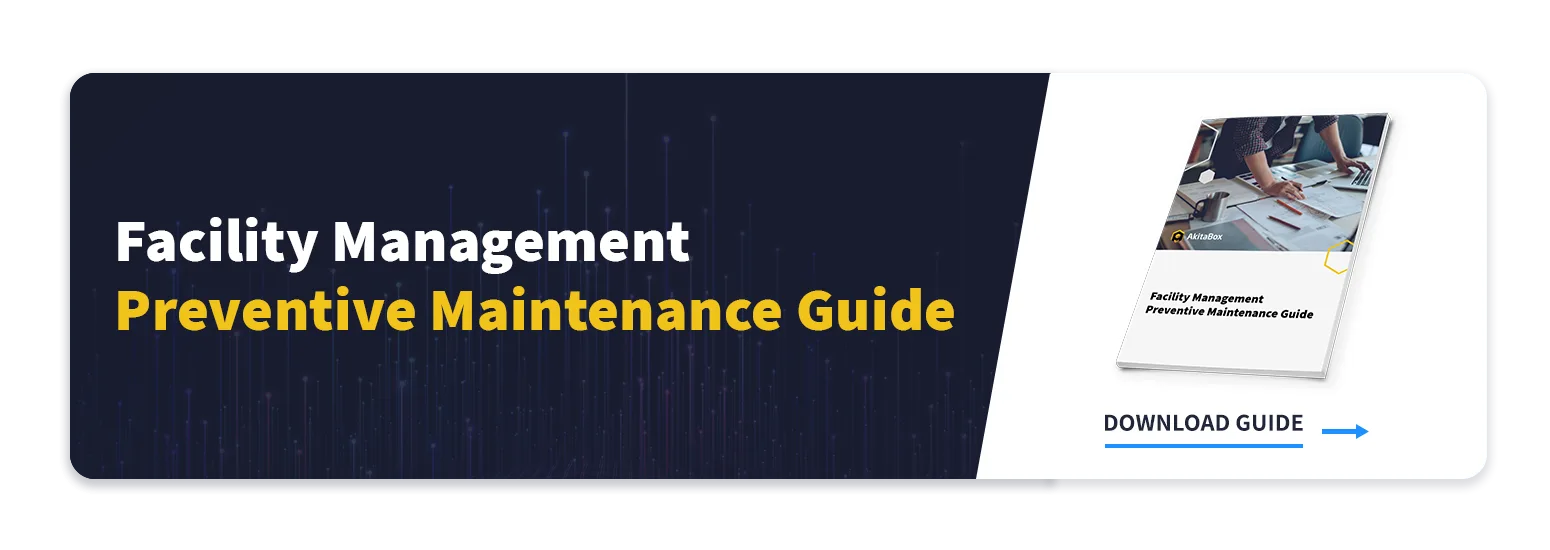You’ve no doubt heard the phrase “wrench time” thrown around as a way to measure how efficient your team is—but is it truly the best metric to determine the productivity of your technicians? And if it is, how can you empower your team to maximize wrench time using hard data? Today we’re unpacking and redefining wrench time and showing you how you can use facility management software to help improve your team’s efficiency.
What is Wrench Time in Facility Management?
In the most literal sense, “wrench time” is “the time a maintenance tech spends using a wrench.” However, the way that facility teams use the term refers to “the time a maintenance tech spends actually servicing equipment.”
Wrench time is used to judge how much time is spent getting the job done versus performing other tasks, such as prep work, gathering materials and travel time. Using this definition as the sole metric to base an employee’s efficiency on can be problematic: there are a lot of variables at play throughout a maintenance technician’s day, and boiling them down to either “work” or “not work” makes teams lose sight of other important statistics.
Instead, organizations must create their own definitions of what constitutes wrench time, what that metric represents, and what decisions should be based off of it. Wrench time can be defined more holistically as “a metric used to measure how efficiently information is managed and how effectively this information supports maintenance processes.”
Defining Wrench Time for Your Organization
Understanding this explanation is easy when the process is broken down into parts. Use your knowledge of your organization to create a proper context: what unique characteristics does your organization have that may influence how quickly a job gets done?
First, look at the different processes that go into completing a work order:
- Information gathering: What information is necessary to get the job done in a safe, quality, complete manner?
- Travel: Where is the equipment that needs to be serviced and how are team members accessing it?
- Service: The true “wrench time”. Using the tools provided, how long does it take to perform the service from start to finish?
How Can You Track These Processes?
The simplest, yet sometimes most difficult hurdle is simply filling out work orders. This offers the best way to track performance. Promoting detailed reports that include overlooked (and under-reported) “information gathering” and “travel” aspects will give a more well-rounded picture of the health of your processes and areas for improvement. This valuable information can fall by the wayside simply because an organization’s reporting mechanisms are complicated, a pain to use, or not the right fit for the jobs being performed.
When you strip away the constant struggle that comes with the too-simple question “how quick is a person performing their job?”, measuring wrench time is less about pushing employees to work faster and more about providing them the tools to:
- Quickly and easily access the information required to complete a job
- Quickly and easily record all the steps they took to complete that job
To properly arm your team with the right information to maximize wrench time, you should strive to provide accurate records that are accessible out in the field.
This includes providing them information like:
1. Complete floor plans with asset locations
- Having a bird’s eye view of your asset inventory allows maintenance technicians to plan out the most effective route for their day. Less backtracking, less time spent walking back and forth from the same location.
2. Detailed asset information
- Having digitized asset information available in the field eliminates trips back and forth to the maintenance office. When gathering this information, include:
- Make, model and serial number: so you know what you’re working with
- O&M manuals: so you have a reliable reference of information
- Related assets: so you know if you need to shut off valves or lock out/tag out other components in a system
- Photographs: so you know exactly which circ pump you’re looking for
The above information provides the proper background to reduce inefficiencies that impact wrench time. If your team has up-to-date floor plans and equipment data, they will spend less time doing prep work and more time performing actual maintenance. The next step toward maximizing wrench time is having the right tool to use this data to your advantage.
The right work order system should:
- Be robust enough to collect and interpret the right data. Painting a more accurate picture of your wrench time is impossible if you don’t have a system that can transform the data it collects into understandable, actionable reports.
- Be simple enough that your team will actually use it. This is key. If a reporting system is a pain to use, nobody will use it. Writing out things with a pen and paper won’t cut it anymore. A software with a good user interface can eliminate the major hurdle in tracking wrench time: nobody properly recording it. Your work order system should provide a standardized form that’s clean, quick, and simple. The other major benefit of a standardized form is that it provides a reliable framework for data entry (and thus produces more uniform results).
Where Does Facility Management Software Come In?
File organization and up-to-date equipment data empower your team by helping them get the job done more efficiently, then improve their performance by reflecting on their process. The best facility management software will include all your asset data, a document management system and a work order system into one software platform that your entire team can take advantage of. There’s no better way to keep track of all this information than using a system like AkitaBox.
To learn more about the benefits of using a facility management software like AkitaBox, schedule a 20-minute product tour here.
